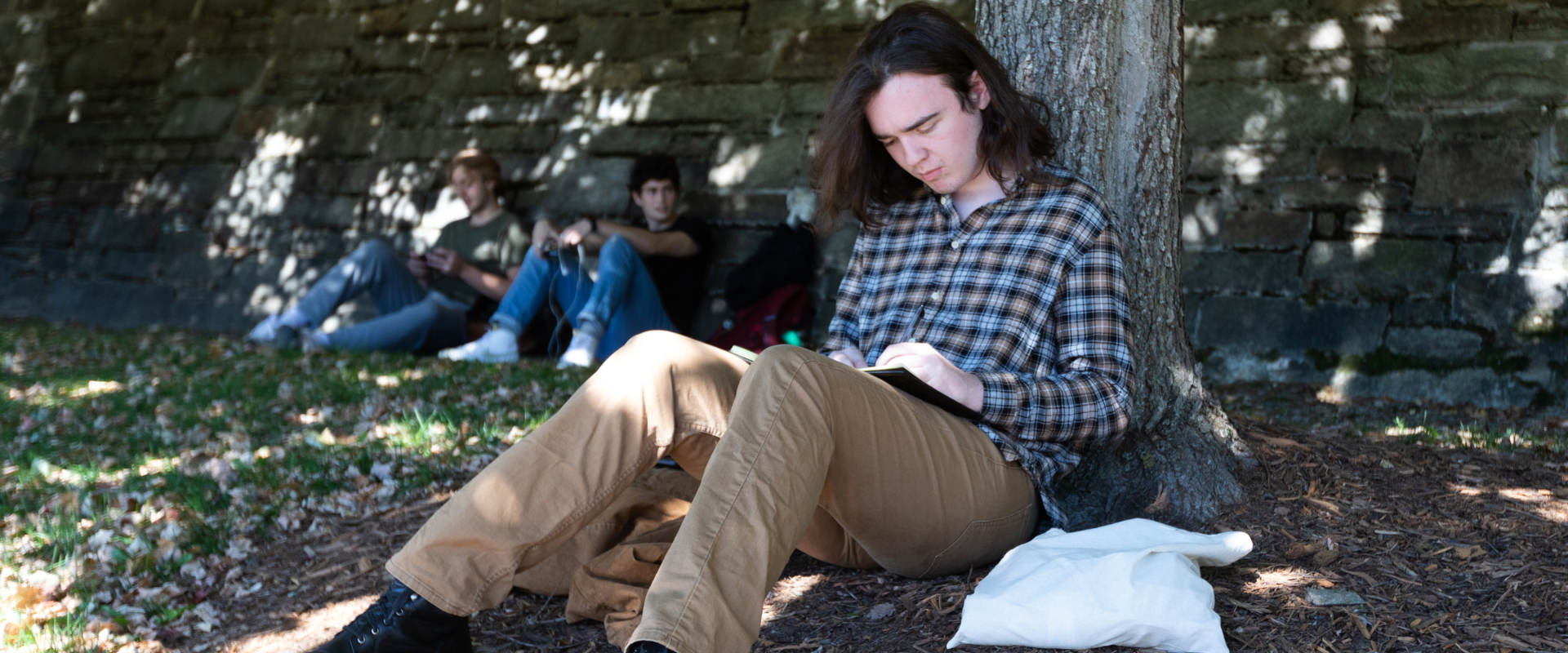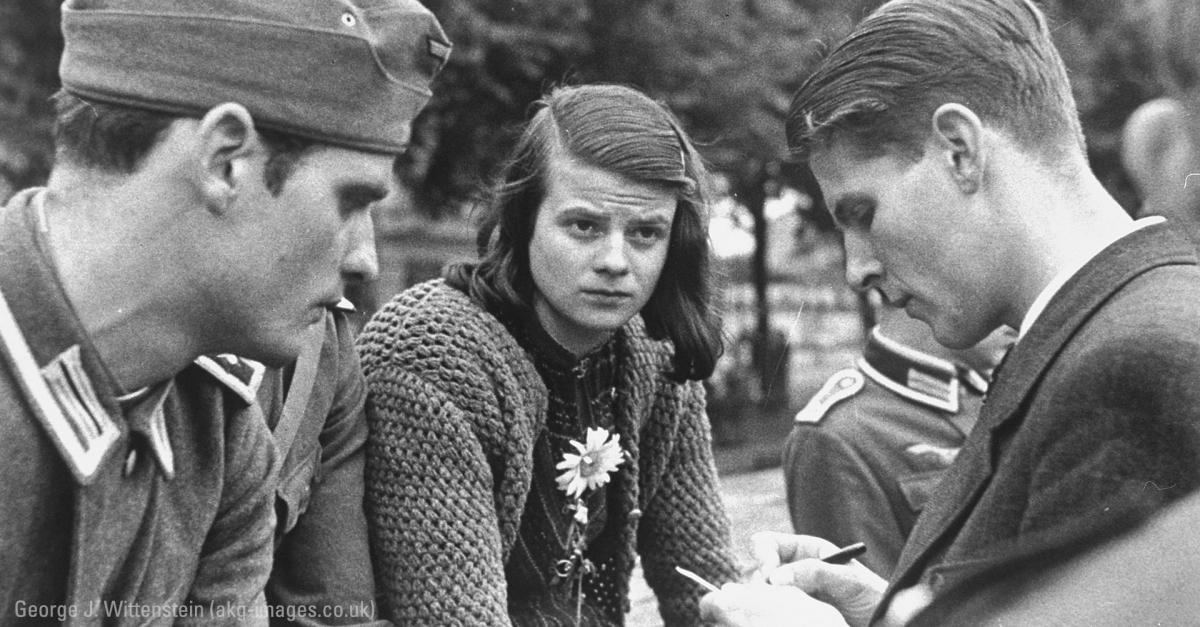White Rose Student Research Contest
Appalachian State University's Center for Judaic, Holocaust and Peace Studies (CJHPS) is pleased to host the White Rose Research Contest for 8th through 12th grade students.
Contest Prompt
The 2025-26 contest prompt is Non-Jewish Victims of Nazi Persecution and Murder. Please check back for details.
General Guidance
Students, the following contest rules govern the use of sources:
- Contestants must base their entry on at least three of the provided contest documents (sources).
- In addition, contestants must use at least two additional sources of information obtained through research.
- A reference list page should be included that credits all and only the sources of information used in your essay or documentary.
- No matter what style manual you use, bibliographies are not allowed for the White Rose Research Contest. (Please make sure you understand the difference between a reference list and a Bibliography.)
- All information beyond common knowledge must be cited.
- Citations must follow Modern Language Association (MLA), American Psychological Association (APA) or Chicago Manual of Style (CMS) format and be consistent within the paper or documentary and reference list page. The OWL (Online Writing Lab) at Purdue is a good source of information about these style manuals.

Approved Websites for Student Research
Here is a list of approved websites for student research published by the Midwest Center for Holocaust Education.

Primary Source Documents for Student Research
Here is a list of primary source documents for student research published by the Midwest Center for Holocaust Education.
Additional Information & Resources
Contest Eligibility
The White Rose Research Contest is open to students in 8th through 12th grades.
Entries are accepted in two categories: Essay or Documentary.
Entrants compete in two age divisions: Lower (8th and 9th Grade) and Upper (10th, 11th, and 12th Grade).
Students may submit one entry in one contest category per year. Students may enter the contest every year they are eligible. Previous winners may enter gain.
Sponsoring teachers may enter the ten best essays and the ten best documentaries created by their assigned students during a contest year.
Contest Rules
General Contest Rules
- All information beyond common knowledge must be cited–following MLA, APA or CMS format.
- Contestants must base their entries on at least three of the provided contest documents (sources).
- In addition, contestants must use at least two additional sources of information obtained through research.
- Entries must be submitted through the CJHPS website by the contest deadline.
- Entries will not be returned. Entrants give CJHPS permission to publish entries. Decisions of the judges are final.
- Sponsoring teachers may instruct, guide and review, but may not rewrite or extensively edit student work.
- No portion of the work may be plagiarized–a problem most often caused when sources are not properly credited.
Contest Rules for Written Work
- 1,600 words maximum allowed for an essay. At minimum, one-fourth of the total length of the essay (400 of 1,600 words) must be reserved for the reflection portion of the contest prompt. The maximum word count need not include the reference list.
- 800 words maximum allowed for a process paper; this word count need not include the reference list.
- The reference list is the last page of the essay or Process Paper. It lists—in alphabetical order—all and only the sources cited within the essay or used in the documentary. Bibliographies are not allowed. All citations—in the text and reference list—must be consistently formatted in MLA, APA or CMS style.
- Essays and process papers must be the original work of the entrant.
Contest Rules for Audio-Visual Work
- Documentaries should be at least seven minutes but no longer than ten minutes in length. At minimum, one-fourth of the total length of the documentary (2.5 of 10 minutes) must be reserved for the reflection portion of the contest prompt.
- The last portion of the documentary must be a list of acknowledgments and credits for sources of still images, moving images, interviews, music, and narration that comprise the documentary. These source credits must be brief—not full bibliographic citations and not annotated. Full credits, in MLA, APA or CMS style, must be given in your reference list.
- Documentaries should be in mp4 format, submitted as a YouTube link. Finalists may be asked to submit the mp4 files of their documentaries to CJHPS.
- Documentaries must be original productions of the contest entrants.
About the Documentary Category
A documentary is an audio/visual presentation that uses many types of sources such as still images, video, and sound to communicate a historical argument, supported by research and a reflection on this year’s contest prompt.
Entrants submitting a documentary must also submit a Process Paper that answers the following questions:
- How did you choose your topic, and how does it relate to this year’s contest prompt?
- What is the thesis (historical argument) of the documentary?
- How did you conduct your research?
- How did you create the documentary?
The end of the documentary must show a list of credits that acknowledges the sources of still images, moving images, interviews, information used in narration and music used within the film/video. These source credits must be brief—not full bibliographic citations and not annotated. However, these credits should match the citations on the reference list page that must accompany the Process Paper.
Documentaries should be saved in mp4 format, submitted as a YouTube link. Finalists may be asked to submit the mp4 files of their documentaries to CJHPS.
The White Rose—The Story of Hans and Sophie Scholl

The story of Hans and Sophie Scholl, brother and sister, is the story of courage, resistance, and compassion. As Nazi Germany came to power a student group in Munich formed to resist violence and fascism. Hans was one of the White Rose’s founders. Hans and Sophie had come to Munich for university and became active resisters of fascism, passing out pamphlets and speaking publicly against the Nazi Regime. In February 1943, when Hans was 25 and Sophie was 26, they were caught handing out flyers by a custodian of the Maximilian University of Munich. He went to the Gestapo, and they were immediately arrested. Four days later, on February 22, 1943, the court sentenced them to death. The judge chose that they be executed by guillotine, an unusual and horrible way to be killed. They were killed that day and buried in a neighboring cemetery. Hans and Sophie are still considered important examples of resistance and numerous prizes and memorials exist in their name. One memorial in Munich is called the Geschwister-Scholl-Platz. It is in front of the political science building of the Maximilian University in Munich. The last flyer of the White Rose is embedded in the ground in the Platz.
Questions?
Contact Amy Hudnall via email at hudnallac@appstate.edu or via phone at (828) 262-6025.